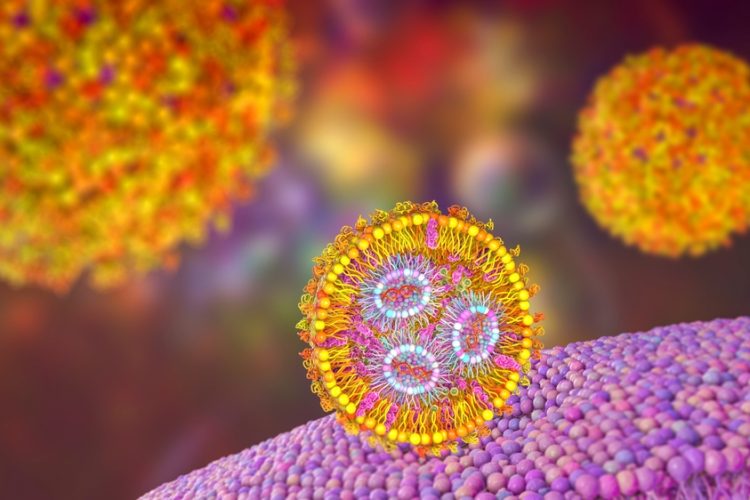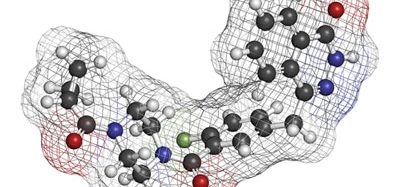Synthetic proteins key to modular nanoparticle design
Posted: 31 October 2023 | Drug Target Review | No comments yet
Researchers have been able to customise nanoparticles to target biological entities, like tumours and viruses.


Modular nanoparticles that can be customised to target various biological entities, like tumours, viruses, or toxins, have been developed by engineers at the University of California San Diego. The nanoparticles’ surface is engineered to host any biological molecule of choice, enabling scientists to tailor the nanoparticles for many applications, from neutralising biological agents to targeted drug delivery.
This technology is both simple and efficient, because instead of making completely new nanoparticles for each specific application, researchers can now employ a modular nanoparticle base and attach proteins targeting a desired biological entity. Creating distinct nanoparticles for different biological targets previously required going through a different synthetic process from start to finish each time. However, with this new technique, the same modular nanoparticle base can be modified to create a whole set of specialised nanoparticles.
Dr Liangfang Zhang, Professor of Nanoengineering at the UC San Diego Jacobs School of Engineering said: “This is a plug and play platform technology that allows for rapid modification of a functional biological nanoparticle.”
Reduce preclinical failures with smarter off-target profiling
24 September 2025 | 15:00PM BST | FREE Webinar
Join this webinar to hear from Dr Emilie Desfosses as she shares insights into how in vitro and in silico methods can support more informed, human-relevant safety decisions -especially as ethical and regulatory changes continue to reshape preclinical research.
What you’ll learn:
- Approaches for prioritizing follow-up studies and refining risk mitigation strategies
- How to interpret hit profiles from binding and functional assays
- Strategies for identifying organ systems at risk based on target activity modulation
- How to use visualization tools to assess safety margins and compare compound profiles
Register Now – It’s Free!
The modular nanoparticles consist of biodegradable polymer cores coated with genetically modified cell membranes. The key to their modular design is a pair of synthetic proteins, termed SpyCatcher and SpyTag. These are purposefully designed to spontaneously, and exclusively, bind to each other and are commonly used in biological research to combine several proteins. In this study, Zhang and his team exploited the pair to create a system for easily attaching proteins of interest to a nanoparticle surface.
SpyCatcher is embedded onto the nanoparticle surface, whereas SpyTag is chemically linked to a protein of interest, such as one targeting tumours. When SpyTag-linked proteins encounter SpyCatcher-decorated nanoparticles, they bind to each other, enabling the desired proteins to join to the nanoparticle surface. For instance, to target tumours, SpyTag can be linked to a protein designed to seek out tumour cells, and that SpyTag-linked protein is then attached to the nanoparticle.
“It’s a very simple, streamlined and straightforward approach to functionalising nanoparticles for any biological application,” said Zhang.
To make these modular nanoparticles, the team genetically engineered human embryonic kidney (HEK) 293 cells, a frequently used cell line in biological research, to express SpyCatcher proteins on their surface. Then, the cell membranes were isolated, broken into smaller pieces, and coated onto biodegradable polymer nanoparticles.
The nanoparticles were subsequently mixed with two different SpyTag-linked proteins. One targeted the epidermal growth factor receptor (EGFR) and the second targeted human epidermal growth factor receptor 2 (HER2), both of which are prevalent on the surface of several cancer cells.
The scientists tested these nanoparticles in mice with ovarian tumours as a proof of concept. The nanoparticles were loaded with the chemotherapy medication docetaxel and administered to mice by intravenous injection every three days for a total of four injections. The treatment with these nanoparticles meant that tumour growth was suppressed, and the mice had an improved survival rate. Whilst the median survival of untreated mice was 24 to 29 days, treated mice had median survival of 63 to 71 days.
The researchers are hoping to further improve the modular nanoparticle platform for targeted drug delivery. As well as cancer treatment, Zhang is excited about other prospective applications of this technology. “Because we have a modular nanoparticle base, we can easily attach a neutralising agent on the surface to neutralise viruses and biological toxins,” he said. “There is also potential for creating vaccines by attaching an antigen on the nanoparticle surface using this modular platform. This opens the door to a variety of new therapeutic approaches.”
This study was published in Nature Nanotechnology.
Related topics
Drug Delivery, Drug Targets, Nanoparticles
Related conditions
Ovarian cancer








